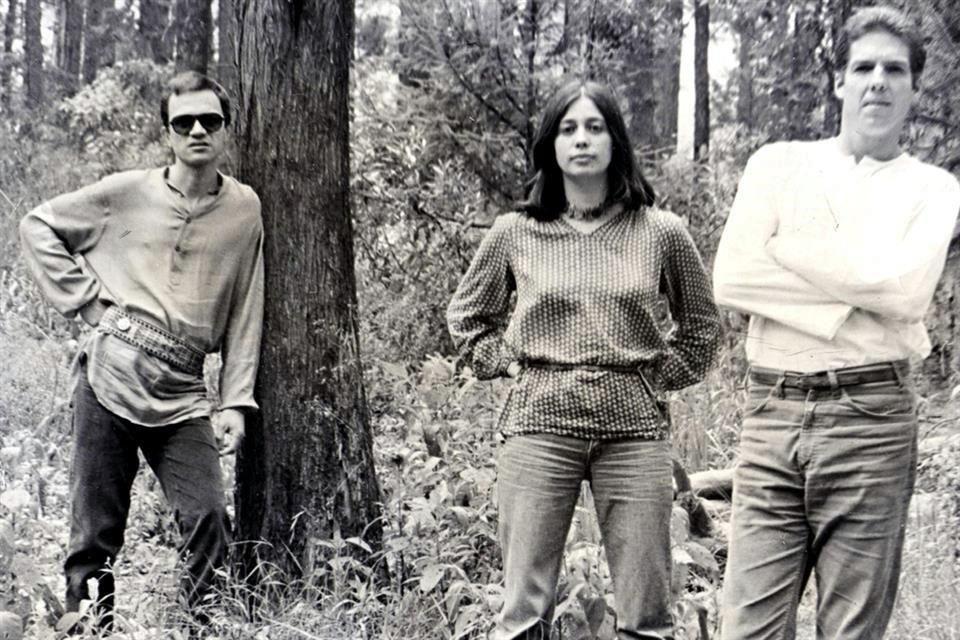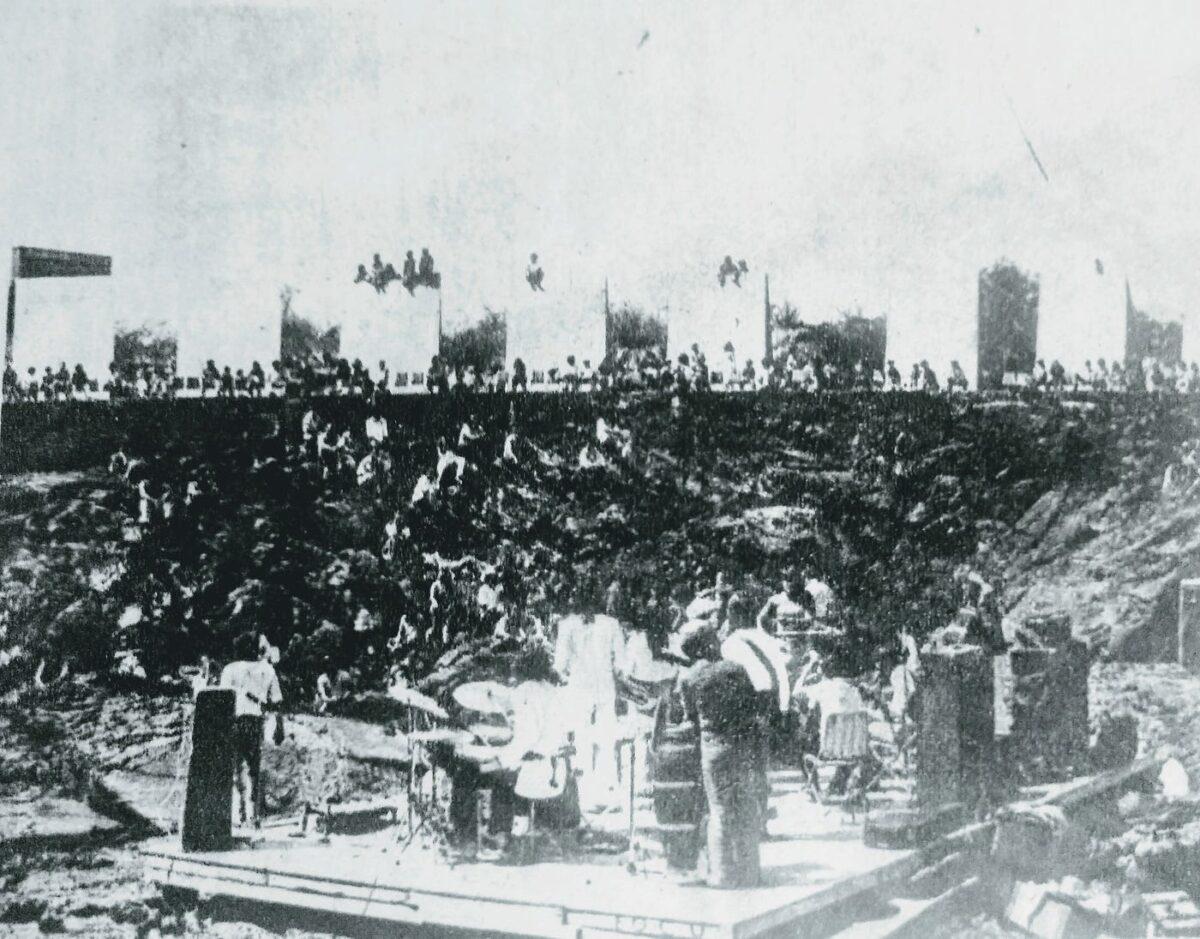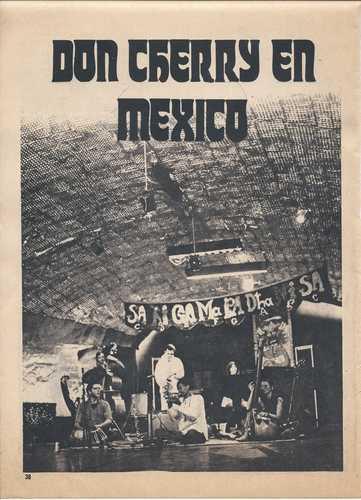
“That Magical Empathy”: Atrás del Cosmos and Free Improvisation in Mexico
In Tamar Barzel’s chapter for Experimentalisms in Practice: Music Perspectives from Latin America on Atrás del Cosmos, a group often considered the first free jazz ensemble in Mexico, she aptly describes the thrill of hearing free music when illustrating the pull of Atrás del Cosmos, how their music was “the act of tempting entropy, of standing on the brink of chaos without succumbing to it.” Their residency at El Galeón black box theater in Mexico City, which spanned eight months from 1975 to 1976, cemented their legacy as pioneers of free music in Mexico. Pianist Ana Ruiz, alto saxophonist Henry West, and percussionist Evry Mann filled the venue’s three hundred seats with ease, guiding their rapt audience members through transcendent improvisations that influenced generations of musicians. Their sole cassette from 1981, Cold Drinks, Hot Dreams, is finally getting its first vinyl reissue via Blank Forms, and the only released track so far, “Hot Dreams,” has me bewitched.
Each of the core members of Atrás del Cosmos had artistic experiences which brought them closer to experimental before they’d even met. Ruiz learned piano from her grandmother growing up, and eventually attended the National Conservatory for composition, although never completing her studies. One of her teachers, Gerhart Münch, showed her how to eschew technique in favor of experimentation, and she gradually became more and more engaged with contemporary works by composers such as John Cage and Erik Satie. West struggled against the creative limitations of academic art institutions, and his experimental proclivities brought him to study mime with the esteemed filmmaker Alejandro Jodorowsky in 1964. The pair worked closely together for years and even created their own free improvisation ensemble with the intermedia artist Luis Urías. Mann’s experiences in the United States introduced him to jam bands, Indian tabla, and through a summer abroad in Mexico City, Atrás del Cosmos during their El Galeón residency. He immediately left his doctoral program and moved to Mexico City to join the group, conveniently replacing their drummer Nando Estevané, who needed to leave the ensemble.

Atrás del Cosmos pushed back against the idea that experimental music was reserved for the realm of academic institutions, a common thread in the prior experiences of Ruiz, West, and Mann. Their packed residency at El Galeón was somewhat of an anomaly, as there wasn’t an established free music scene in Mexico City at the time. There were some groups that set a precedent for the music Atrás del Cosmos would eventually embrace, such as the late 1960s groups Escorpión Ascendente, El Inconsciente Colectivo, and Las Damas Chinas, and Mario Lavista’s Quanta ensemble from 1970 to 1972, but not so many contemporaries. They also didn’t exactly fit the mold of the various music scenes that rose up through social change in 1970s Mexico City’s middle class, such as the underground rock scene and the canto nuevo movement. At the end of the day, Atrás del Cosmos referred to their own music as free music, free jazz, or the best descriptor, “It’ll hurt you but you’ll like it.”
Regardless of the lack of a wider scene, Atrás del Cosmos packed their initial residency location, El Granero, so tight they had to be moved to El Galeón, a theater that perfectly suited their purposes for sharing music and community. Mann described the venue’s atmosphere to Barzel in 2015: “It was an intimate space and it was a great place to play music….The sight lines were good, the acoustics were good—you could really feel the connection with the audience there….There was very little separation. And it wasn’t a club, they weren’t selling drinks, there weren’t distractions. People came there to hear music or see theater. That was it. So it was a really intense, focused experience….God, we had so many amazing evenings there.” Sometimes, other artists such as visual artists and dancers, would be so moved during the performances, they would join the ensemble onstage and begin demonstrating their own art. Also, Atrás del Cosmos made sure to have intermissions so that people would have a chance to get to know one another, nourishing the creation of a scene.

The El Galeón residency granted them many other opportunities as well, such as performing at government-sponsored casas del cultura throughout the country, but perhaps most notably, it secured them a collaboration with US free jazz innovator, Don Cherry in 1977. At this time, the trumpeter was in the midst of his journeys into world fusion music that drew upon traditions from North Africa, India, and Turkey. Because Cherry was more in this style than free jazz when Atrás del Cosmos got together with him, they actually found the music they performed with him to be more structured than their own. Cherry’s travels to Mexico to work with Atrás del Cosmos also aligned with the Organic Music Project organized by him and his wife Moki Tambauka, which focused on the global healing power of music. Through the Organic Music Project, Cherry and Atrás del Cosmos held workshops for a month.
These workshops held with Cherry drew Atrás del Cosmos into teaching further. The group taught improvisation classes through their own means later on, instructing students on musical skills while simultaneously encouraging them to break the very rules they were told. Ruiz said in an interview with Barzel, “We told them, ‘This is how you write it, but you have the capacity to take it to a new place, to destroy what is written and make your own music.’” These improvisation classes led them to create a larger, instructional ensemble called La Banda Atrás del Cosmos.
Over the span of eight years, Atrás del Cosmos collaborated constantly, as if making art with one another was like breathing. Ruiz recalled, “We played all day. All day. We ate breakfast, and we played. We ate lunch…and we started playing again. At night, friends came over, and we kept playing. Luckily we lived in a neighborhood that let us do this….We were the artists who lived in the ‘funky’ neighborhood.” Despite this rigorous amount of creation and exploration, only one cassette ever emerged from the ensemble, 1981’s Cold Drinks, Hot Dreams. However, Barzel alluded to a vast amount of rehearsal and concert recordings that are currently being archived and digitized at the Fonoteca Nacional, Mexico’s national sound archive, which she estimates would be the largest body of recordings documenting free improvisation in Mexico. So who knows what other lost gems of Atrás del Cosmos’ spellbinding excursions could resurface for our ears?
As is the case with all free music, it could be argued, there is nothing like hearing it live. And if any fortunate individuals reading this post are in Brooklyn on April 26th, Atrás del Cosmos are performing at 468 Grand Ave #1D, comprised of Ana Ruiz and Evry Mann, with NYC mainstay Daniel Carter joining them on saxophone. Those in attendance that night I’m sure will hear what the saxophonist Alejandro Folgarolas described about his first experience hearing them perform back in the day: “I still can’t explain how they arrived at that magical empathy—how they were able to communicate in fractions of a second, in milliseconds, achieving this magical rapport.”
You can borrow Experimentalisms in Practice: Music Perspectives from Latin America, which had Tamar Barzel’s extremely helpful, and I’d say definitive-to-date chapter on Atrás del Cosmos, via the public library.
– Hannah Blanchette
–
April 9, 2024 | Blog